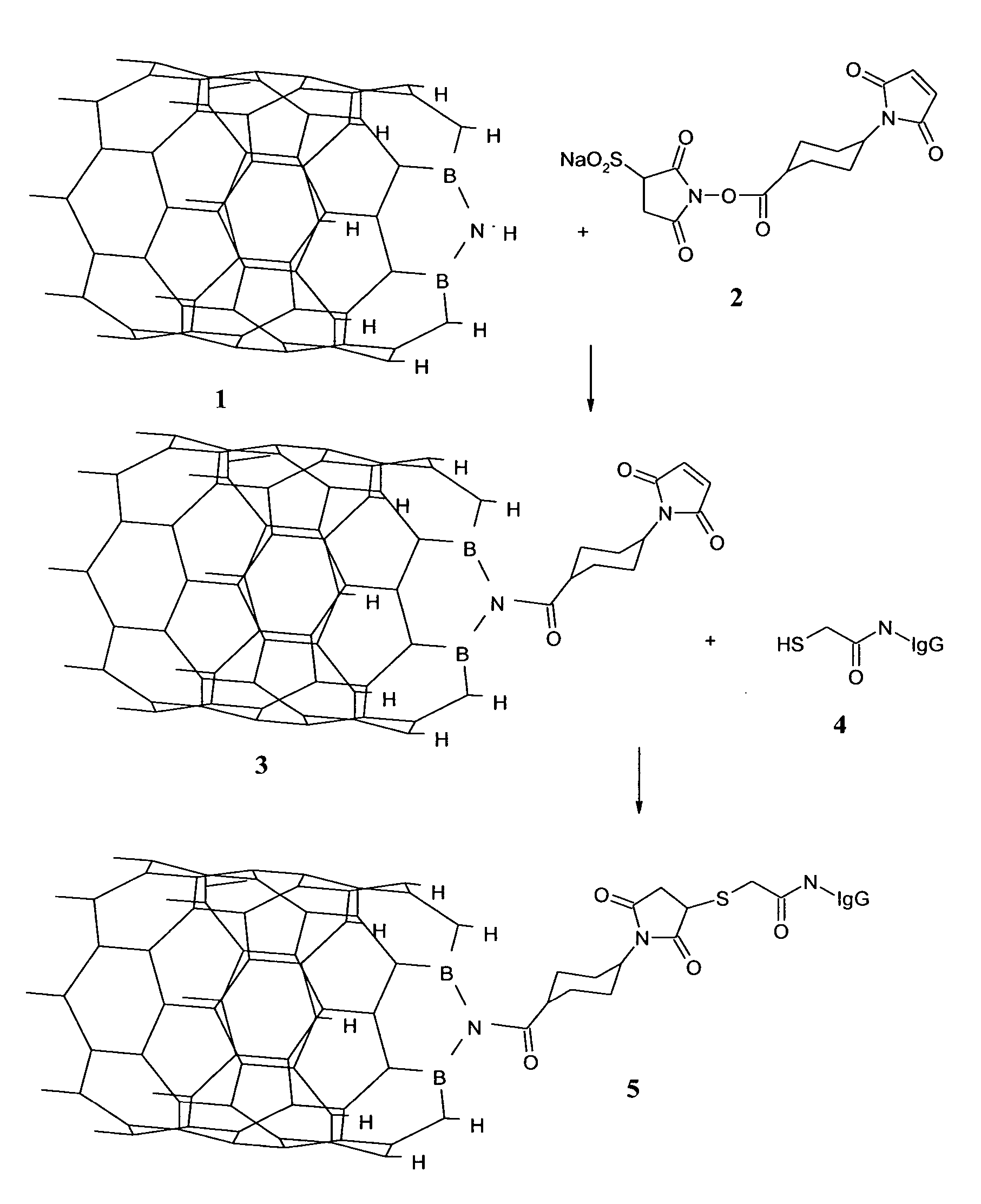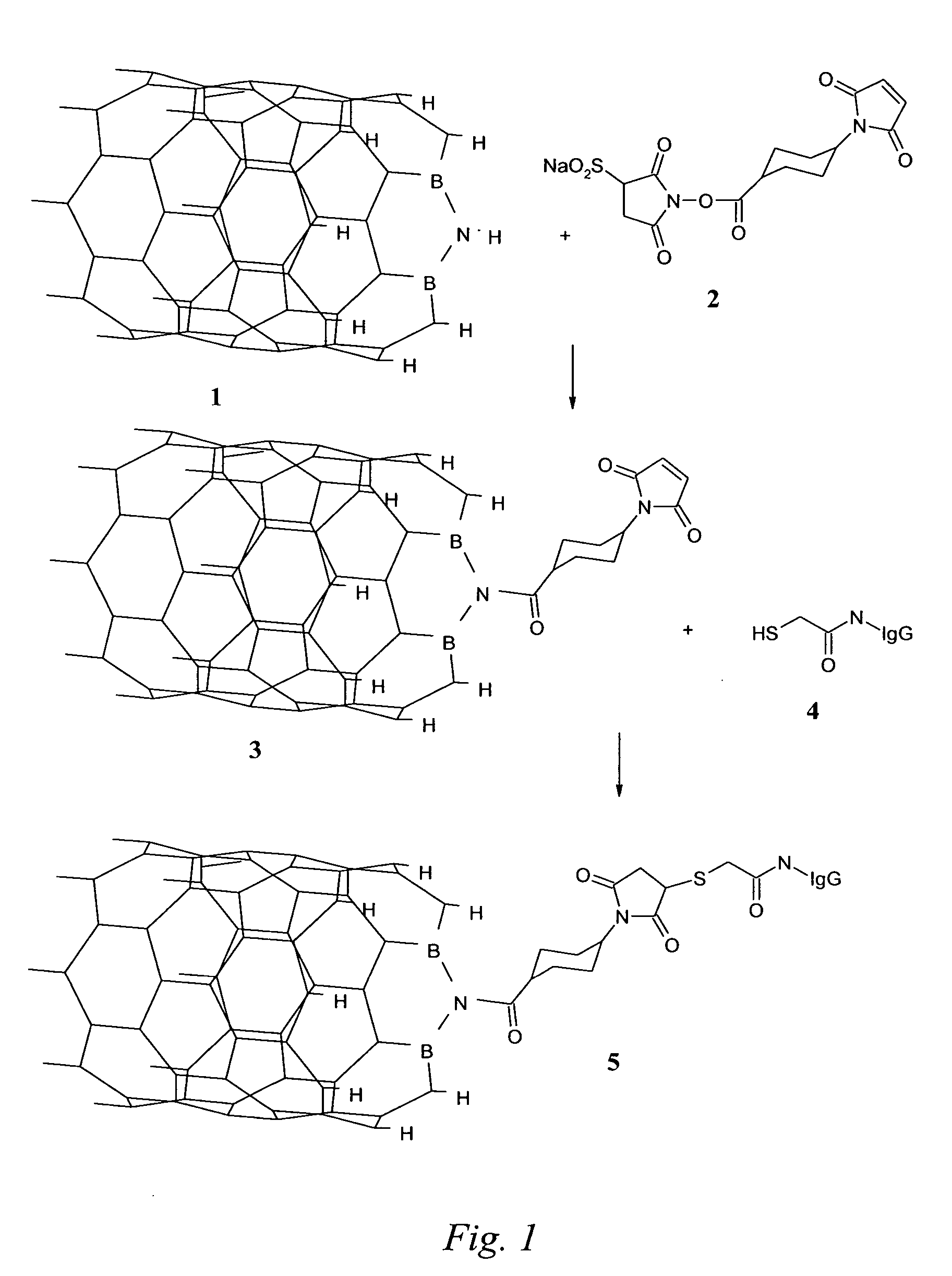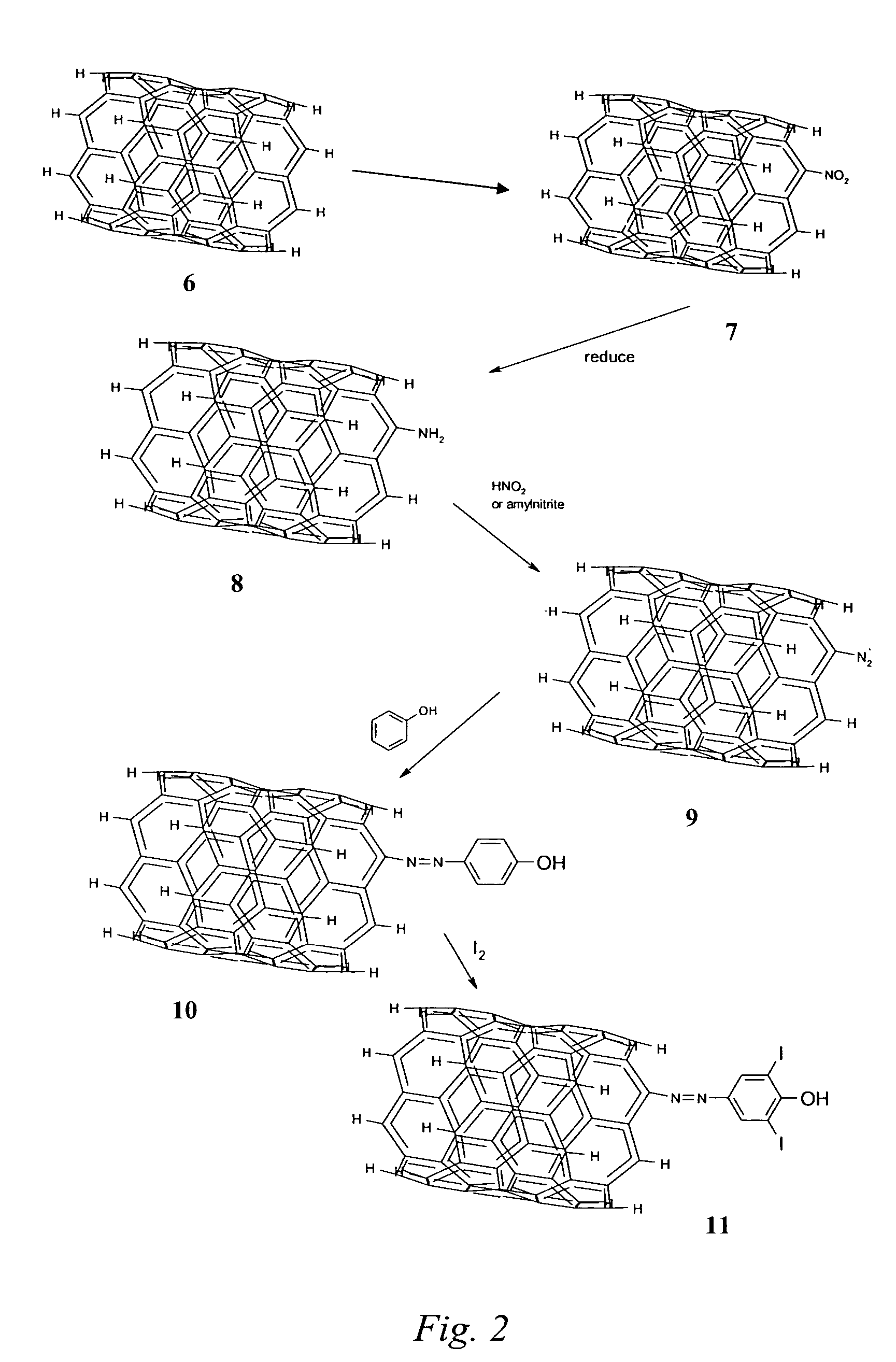Nanotubes for cancer therapy and diagnostics
a cancer and nanotube technology, applied in the field of cancer therapy methods, can solve the problems of losing the ability to target tumors and previously impractical, and achieve the effect of reducing the number of tumors
- Summary
- Abstract
- Description
- Claims
- Application Information
AI Technical Summary
Benefits of technology
Problems solved by technology
Method used
Image
Examples
example 1
[0047] This Example serves to illustrate, by way of a calculation, the efficiency by which BN nanotubes can deliver radiation to a tumor site in BNCT. A 1 μg amount of BNnt is shown to locally deliver 0.43 microcuries (μc).
N=ϕ V∑aλ(1-ⅇ-λt)A0=N1λ1+N2λ2N1λ1=σa1N0ϕN2λ2=σa2′N0ϕ σ_a1=σa298(π2) 293T=(σaα)(0.868)=(3,838b)(0.868)=3,332.5b=3332.5×10-24 cm2 1019.99%B⇒σaα=3838b 11B⇒80.0%σaα=5 mb # boron atoms in 0.001 grams BN nanotubesneutrons / s↘↙A0=(3332.5×10-24 cm2)(2.4×1016)(1×109)3.7×104 dps / μc t1 / 2=0.693λ=(2.16 μc)(0.20) ↙ % activated =0.43 μc (for 0.001 g of BN nanotubes delivered)
where: [0048] N is the number of radioactive nuclei activated by the neutron beam. [0049]φ=neutron flux [0050] V=volume of targeted atoms [0051]σ=sum of all nuclei which can be activated [0052]λ=decay constant [0053] T=time of activation
example 2
[0054] This Example serves to illustrate the efficiency by which radioactive-laden CNT-IgG species can deliver radiation. In the calculation below, each 1 μg of CNTs administered to a mammalian subject, wherein each CNT carries only 1 128I atoms, it is believed at least about 3 curies of radiation is delivered. 53128I→ 128Xe+β-1+αN=N0ⅇ-λt A=λ N=λ N0ⅇ-λt λ=ln 2t1 / 2=0.69325 min=0.027721 min-1[0055] MW of 100 C atom nanotube with 10 128I per nanotube: 2600 g / mol [0056] If 0.001 grams of nanotubes are delivered: 0.001 g2600 g / mol=3.8x 10-7moles nanotubes[0057] MW of 1000 C atom nanotube with 10 128I per nanotube: 14,480 g / mol 0.001 g14,480 g / mol=6.9x 10-8moles nanotubes N0=(6.91×10−8 moles)(6.02×1023)=4.157×106I atoms per 0.001 grams of 1000 C atom nanotube
or
2.318×1017 I atoms per 0.001 grams of 100 C atom nanotube
A=λN=(0.0277 min−1)(4.157×1016I atoms)(e−0.02772)=1.12×1015 dpm=30,270 Curies / mole of 1000 C atom nanotube
however,
after 1 min→...
PUM
| Property | Measurement | Unit |
|---|---|---|
| radioactive | aaaaa | aaaaa |
| positron emission tomography | aaaaa | aaaaa |
| PET | aaaaa | aaaaa |
Abstract
Description
Claims
Application Information
 Login to View More
Login to View More - R&D
- Intellectual Property
- Life Sciences
- Materials
- Tech Scout
- Unparalleled Data Quality
- Higher Quality Content
- 60% Fewer Hallucinations
Browse by: Latest US Patents, China's latest patents, Technical Efficacy Thesaurus, Application Domain, Technology Topic, Popular Technical Reports.
© 2025 PatSnap. All rights reserved.Legal|Privacy policy|Modern Slavery Act Transparency Statement|Sitemap|About US| Contact US: help@patsnap.com



